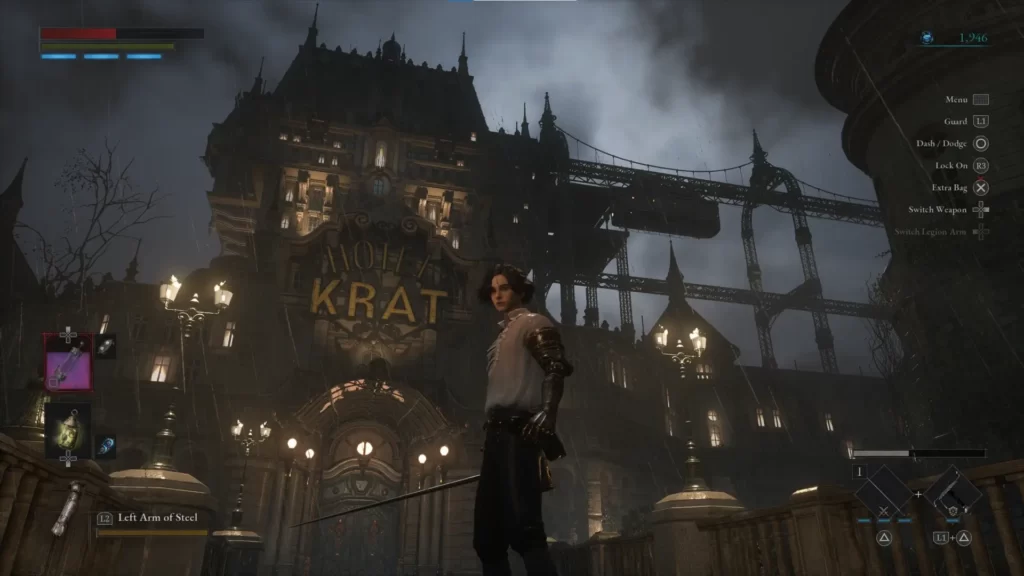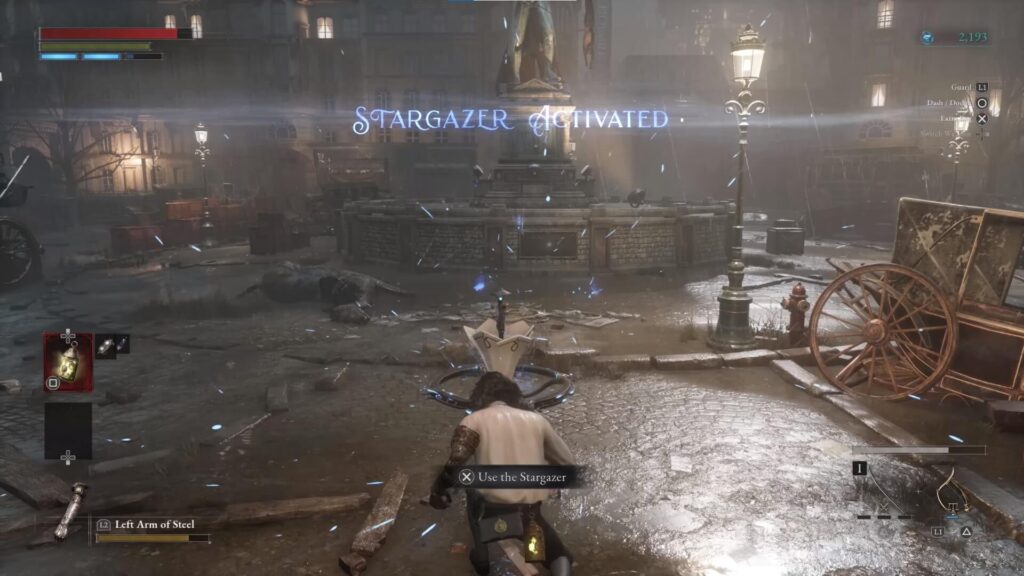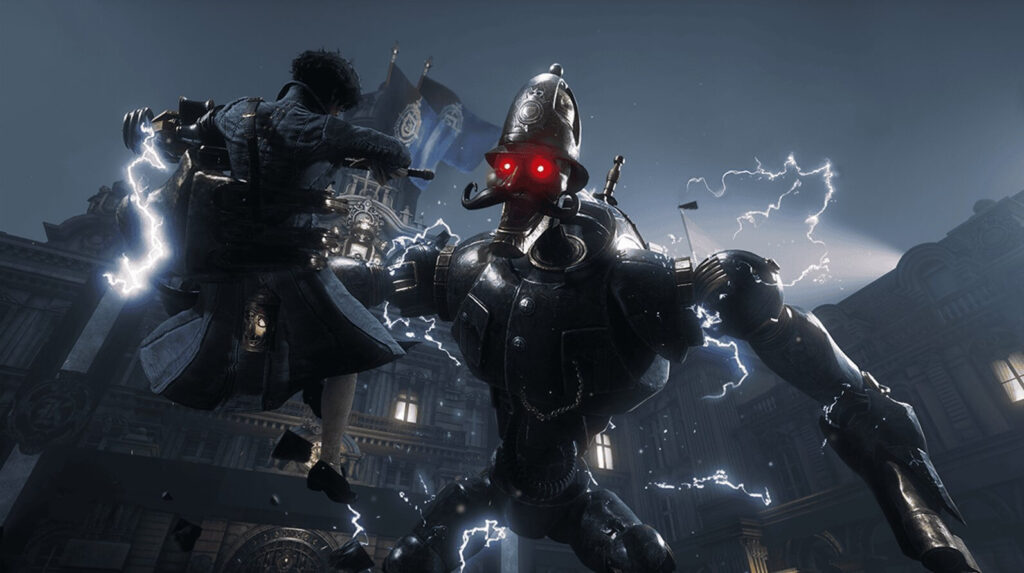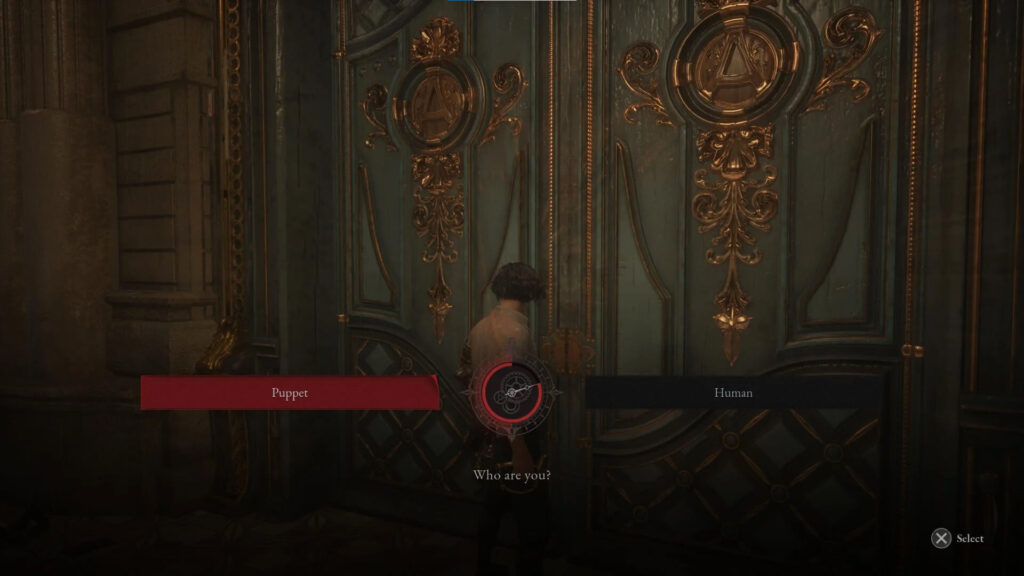Release Date : September 19, 2023
Developer(s) : Round8 Studio
Publisher(s) : Neowiz Games
Platforms : PS4, PS5, Xbox One, Xbox Series X/S, PC
First announced in 2021, Lies of P was quite attractive. The Neowiz and Round8 Studio teams have come up with a new version of Pinocchio’s story. No more colorful animation like in Disney’s adaptation, Lies of P takes a dark-fantasy approach. In the original tale written by Carlo Collodi, Pinocchio is a wooden puppet who wants to become a real boy. With a video game version directly inspired by FromSoftware’s best work, Neowiz and Round8font take the world’s most famous puppet to the next level. Enough to put him in the big league?
Since its announcement two years ago, Lies of P has been the subject of many questions. What is the value of a video game that mixes a children’s story with the codes of FromSoftware games? The public was naturally divided into two groups. The first was dubious about such a mix, but ready to give it a chance; the second believed it was just another bad copy of the Souls games. Throughout the 33 hours it took to complete the adventure for the first time, one feeling kept coming back. A feeling of “damn, I still feel like I’m playing a FromSoftware game”. We’ll explain why in the following sections.
What’s the main plot?
Lies of P begins with Pinocchio waking up on a stationary train. He is then guided by an entity called Gemini, who leads him to seek out his father, Gepetto. He must make his way through the city of Krat, which is completely dominated by rebellious puppets. A classic start for the story, but one that effectively introduces a whole lore that we follow with interest.
Table of Contents
Pinocchio in a World of Sekiro and Dark Souls

Lies of P’s gameplay is obviously inspired by FromSoftware games. The protagonist can attack with his weapon, roll to dodge, or use fable arts: a magical skill that enables particular abilities and techniques. A classic Dark Souls-style gameplay. But Pinocchio has more than one trick up his sleeve. Parrying enemy blows can cause them to lose their stance, if executed with the right timing. Meanwhile, P’s mechanical arm adds a few useful gadgets in battle, so there’s also a little touch of Sekiro in Lies of P. Plus, there’s the execution system and rigid animation you can expect from FromSoftware.
On this point, Lies of P is equally demanding and punishing. There are, of course, the bosses who can wipe you out with a swipe of the sword: you’ll have to go through them several times to get used to the rhythm imposed by each one. While we’ll come back to the customization of our protagonist later, we can already salute the efforts put into each of the game’s major confrontations. They’re all different, and make you think twice before reaching the end.
Lies of P’s combat style is particularly impressive thanks to its underlying tension. Every encounter is a duel. You look each other in the eye before charging into battle. You have to be patient ( total aggression is rarely a solution), which tends to prolong battles while increasing the excitement. A feeling of jousting that’s made even stronger by the design. The sound effects have been carefully selected. Each blow has a particular impact. So it’s often necessary to repeat several times before victory is achieved. But the feeling of power that comes with victory is pure pleasure.

Pulse & Stargazer
We’ve said it before and we’ll say it again: Lies of P is deeply inspired by the FromSoftware formula. Further proof of this inspiration: the pulse and Stargazer system. Pulse Cells can be used to heal your character, but their use is limited. Once empty, the pulse accumulation is recharged during combat (execution, perfect parries, simple attacks…), adding a thrilling layer of tension during boss battles. Otherwise, it recharges thanks to Stargazers: similar to campfires. They allow you to heal yourself, teleport from one stargazer to another, and make various changes to your character. Its drawback? It also resurrects previously defeated enemies.
A Game That Succeeds in Disguising Its Structure

Lies of P is an effective adaptation of FromSoftware’s combat style. The same can be said for exploration. The adventure is divided into a dozen chapters, each with its own biome. While players are often required to explore hallways and streets, they are constantly challenged on their journey. You’ll come across chests, ladders, or doors that you can activate to create shortcuts.
Danger lurks around every corner, sometimes forcing the player to think about how to get through a particular area. Generally speaking, the aim is to get from point A to point B without dying (rather than killing monsters along the way). But this linearity is never felt, thanks in particular to the numerous platform phases and characters you meet along the way. Much to our surprise and delight.
What’s more, the different biomes (as well as the story, but we’ll say no more about this) justify the introduction of new monsters. A pleasant surprise for anyone expecting to see only puppets as victims to be eliminated. These biomes are essentially designed to support the story, but also to enhance the gameplay and, above all, customization.
Pimp My P

Every monster, and especially every boss, is an opportunity to change your equipment. In a fun and intelligent way, the developers use the physical characteristics of “P” to build a unique gameplay style: he’s a wooden puppet whose mechanical arm can be modified. Joints, shells, and support brackets serve as pieces of equipment to reinforce our protagonist’s defense.
But it’s the weapons that really open up the possibilities. Each weapon (and there are quite a few of them!) is made up of a blade and a handle, each with its own special ability. Quite early in the adventure, it is possible to assemble weapons. A Halberd handle can be fused with a fire dagger, or a Rapier handle with the sharp end of a hammer. The result is a range of different powers, as well as a variety of gameplay styles (soft or heavy, for example). It’s not hard to imagine the utility of all of them, depending on the bosses you encounter.
To build your dream puppet, Lies of P lets you customize it using a skill tree called the P-Organ. Quartz recovered from enemies or chests is used to unlock passive skills. There are the major ones (having a second roll, breaking enemy posture with perfect parries, having a new amulet slot) which require at least two minor skills (increased power of charged attacks, better loading of the fable…). Beyond that, the game once again takes a lot from the Souls.

The more you smash enemies, the more Ergo you collect. This is the game’s main currency, useful for many things, but spending it’s also a good idea! Walking around with your pockets full can be risky. Danger lurks around every corner. Death comes quickly, and it would be a pity to lose your money for a moment. You can use your money to buy items from various merchants, but more importantly to level up. Each level allows you to increase your stats in five different characteristics: vitality, ability, legion, mobility, progression, and technique.
It would have been a pleasure to have more clearly defined names, and to have been more sure of their impact on our gameplay. Especially since Lies of P, once again, uses the scaling of weapons on your stats. Each handle has a letter (D; C; B; A; S) in mobility, technique, and progression. The more the grade tends towards S, the more the statistic in question will impact the handle. Like the sharpening in Elden Ring, this scaling can be altered slightly with the cranks for each stat.
Last but not least, Lies of P includes ( and it’s highly recommended to make use of ) a weapon upgrade system. Over the course of thirty hours, the number of upgrade levels seems too small to create a real sense of progression. And that’s a real shame! This is one of the game’s few negative points, despite an excellent customization system. Most of the bosses make you consider a more efficient build to face them, adding a feeling of strength after victory is achieved: I’ve tried, I’ve failed, I’ve changed, I’ve failed better, I’ve tried again, and I’ve succeeded.
Is it possible to re-specialize during a run?
This is perhaps one of the most frustrating aspects of the game. Re-specialization is only possible after more than half the adventure (end of Act VII). However, there are enough materials to collect to effectively upgrade a large part of your arsenal.
A Neat Atmosphere, and Artistic Direction With No Wonders

As mentioned above, the Krat Hotel is an important place to visit: it’s where all your allies are gathered. Merchants, leveling up, weapon upgrades… It’s the safest place in Krat and its surroundings. A peaceful place like nowhere else in Lies of P. It has to be said that the teams behind the game have succeeded in producing a perfect anxious atmosphere throughout the dozen different biomes you play through.
Dead bodies on the ground, ruined buildings, deserted villages… It’s mainly thanks to the scenery that you can easily immerse yourself in Krat’s chilling atmosphere. A great deal of work has also been put into the lighting (you regularly see your shadow on the walls; the rarely sunny weather also contributes to the gloom. On the other hand, despite the variety of environments we pass through, we’re rarely amazed. The “WOW” you might experience on discovery occurs more often with the design of a boss than with the view of beautiful landscapes.
However, there may be surprises along the way. As we said, death is everywhere. Paying attention isn’t enough: you have to become truly paranoid to avoid all the dangers lurking around: huge cannonballs charging at you, enemies armed with pitchforks waiting in the corner… There are even beams that break when you try to fall on them! We’ve mentioned it before, but the sound effects really contribute to the immersion. Without being memorable, the soundtrack remains consistent with the biomes it illustrates. It also knows how to turn up the heat, especially in the final hours of the game.
This feeling of constant danger is enhanced by the characters, and we believe this is one of the title’s greatest strengths. The voiceover is excellent: it’s hard to tell which characters sound different. Vegnini has an Italian accent; Arlecchino “The King of all Riddles”, represents the clever, sarcastic robot; Sophia is a perfect replacement for the other Melinas or the dolls seen in FromSoftware games.
Easy Choices, High Impact: A Clever Rewriting

The script is one of Lies of P’s major strengths. By adapting the Pinocchio tale in FromSoftware’s own style, the game manages to be suggestive without being transparent. On his journey, “P” is confronted with Manichean dilemmas. Each question has an answer, leading the puppet towards humanity; while the other counterpart is the simple puppet with no conscience. This means the player may have to lie. But these answers influence the characters around him. Depending on the player’s choices, different dialogues will be opened, and the player will learn more about a particular character.
In short, our answers have consequences. But unlike FromSoftware games, Lies of P makes this system feel quite natural to pick up. It’s probably by using Pinocchio’s popular tale (whose nose gets longer when he lies) that it’s easier to immerse yourself in each character’s quest, even to the point of encouraging an NG+.
In addition, the game’s many NPCs address several themes. Of course, the themes of truth and lies are mentioned. Love also has its place, with puppet/human relationships that can be compared to those with AI.
How does NG+ work in Lies of P?
At the end of your adventure, the game lets you delete your current playthrough and start a new one. An opportunity to see how the world around you reacts with different behaviors. You keep your stat points, your arsenal, the skill points linked to quartz… Only the collectibles must be acquired again.
Conclusion
Lies of P is definitely a Souls-like game, heavily influenced by FromSoftware games such as Bloodborne. And for a good reason, with a successful spooky universe, a wealth of different weapons and attacks, and solid gameplay. Unfortunately, the result is a double-edged sword: it is inferior to almost every one of its inspirations, often proving less epic, with fewer refined settings, or even less deep and inspired lore. In short, if the analysis is based solely on comparisons, it’s clear that Lies of P struggles to fulfill the huge task of doing as well as its models. But if we don’t confine it to the image of a Bloodborne look-alike, then the picture becomes clearer. By offering its own touches with generosity but with a degree of clumsiness, and through the original concept of revisiting the world of Pinocchio in a much darker perspective thanks to a story that’s more accessible than any of its main references, Lies of P is a great achievement to be enjoyed by all the genre’s enthusiasts.
